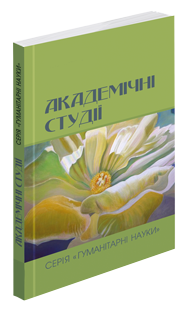Анотація
У статті здійснено ґрунтовне осмислення художнього тексту як універсального та багатоаспектного ресурсу для формування мовленнєвої та культурної компетентності здобувачів вищої освіти у процесі вивчення іноземної мови та літератури. Обґрунтовано, що художній текст виконує не лише функцію джерела автентичного мовного матеріалу, а й постає повноцінним носієм культурних смислів, моделей соціальної поведінки та концептів, притаманних національній ментальності. Його використання у навчальному процесі забезпечує глибоке занурення у культурно-мовне середовище цільової мови, сприяє формуванню міжкультурної компетентності та розширенню світоглядного горизонту студентів. Художній текст є складним поліфонічним явищем, що функціонує на кількох взаємопов’язаних рівнях: естетичному, семантичному, ідейно-емоційному. Він постає як результат індивідуальної авторської творчості, глибоко вкоріненої у колективну мовну та культурну традицію, що робить його цінним ресурсом для формування ключових компетентностей, необхідних для ефективної іншомовної комунікації. Увагу сфокусовано на розкритті поняття компетентності як інтегративної характеристики особистості, що охоплює сукупність знань, умінь, навичок, мотиваційно-ціннісних орієнтирів і здатності до рефлексії, необхідних для успішної міжкультурної взаємодії. Наукова розвідка порушує проблему недостатнього використання потенціалу художнього тексту в сучасній системі мовної освіти, де він переважно виконує допоміжну, ілюстративну функцію. Обґрунтовано необхідність системного методичного залучення художнього тексту до освітнього процесу. Наголошено, що, за умови належного дидактичного забезпечення, художній текст може слугувати ефективним засобом розвитку комунікативної, культурної та інтерпретативної компетентності, сприяючи формуванню критичного мислення здобувачів вищої освіти, а також їхньої здатності до глибокого міжкультурного розуміння й усвідомленого, емпатійного осмислення інакшості.
Посилання
Бехта І. А. Художній текст у сфері новітніх когнітивних студій. Закарпатські філологічні студії. 2019. Вип. 9 (1). С. 57–62.
Губа Л. В. Художній текст як об’єкт лінгвістичних досліджень. Наукові записки Національного університету «Острозька академія». Серія : Філологічна. 2015. Вип. 58. С. 93–96.
Микитенко О. М., Чепелієва С. Г. та Дзюба О. О. Формування компетентності учнів старших класів: проблеми та перспективи. Наукові записки Національного університету «Острозька академія». Серія «Психологічні науки». 2019. № 2 (44). С. 71–76.
Сологуб Н. Мова художнього твору як текст. Науковий вісник Чернівецького університету. Слов’янська філологія. 2009. Вип. 475–477. С. 497–500.
Ставицька І. В. Іншомовна компетентність: місце дефініції у термінологічному полі сучасних наукових суджень. Педагогічні науки: теорія, історія, інноваційні технології. 2013. № 4. С. 280–286.
Степаненко О. К., Вихор В. Г., Приймак Л. Б. Лінгвістичний аналіз художнього тексту. Вчені записки Таврійського національного університету імені В. І. Вернадського. Серія : Філологія. Журналістика. 2022. Т. 33 (72), № 2 (2). С. 205–212.
Anderson J. K. The Role of Language Competence in Developing L2 Monologic Speaking Skills. International Journal of Applied Linguistics and English Literature. 2020. Vol. 10 (2). P. 179–188.
Bachman Lyle F., Palmer Adrian S. The Construct Validation of Some Components of Communicative Proficiency. TESOL Guarterli. 2022. Vol. 16. № 3. P. 449–465.
Canal M. From Communicative Competence to Communicative Language Pedagogy. Language and Communication. London: Longman, 2003. P. 2–27.
García-Berrio A. A theory of the literary text. Reprint. Berlin : W. de Gruyter, 2016. 544 p.
Klieme E. D., Leutner D. E. Kompetenzentwicklung und Bildungsstandards. Kompetenzdiagnostik: Zeitschrift für Erziehungswissenschaft. Springer, 2016. S. 73–92.
McWilliam K. H. Developing Competence in L2 Monologic Speaking: Challenges and Strategies. The Modern Higher Education Review. 2020. Vol. 2 (2). P. 68–77.
Rychen D. S., lganik L. H. Competence in the 21st century: A review and synthesis. Journal of Education and Work. 2018. Vol. 31 (4). P. 315–334.

Ця робота ліцензується відповідно до Creative Commons Attribution 4.0 International License.

